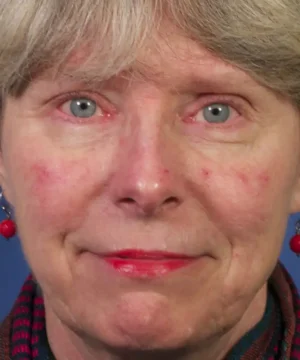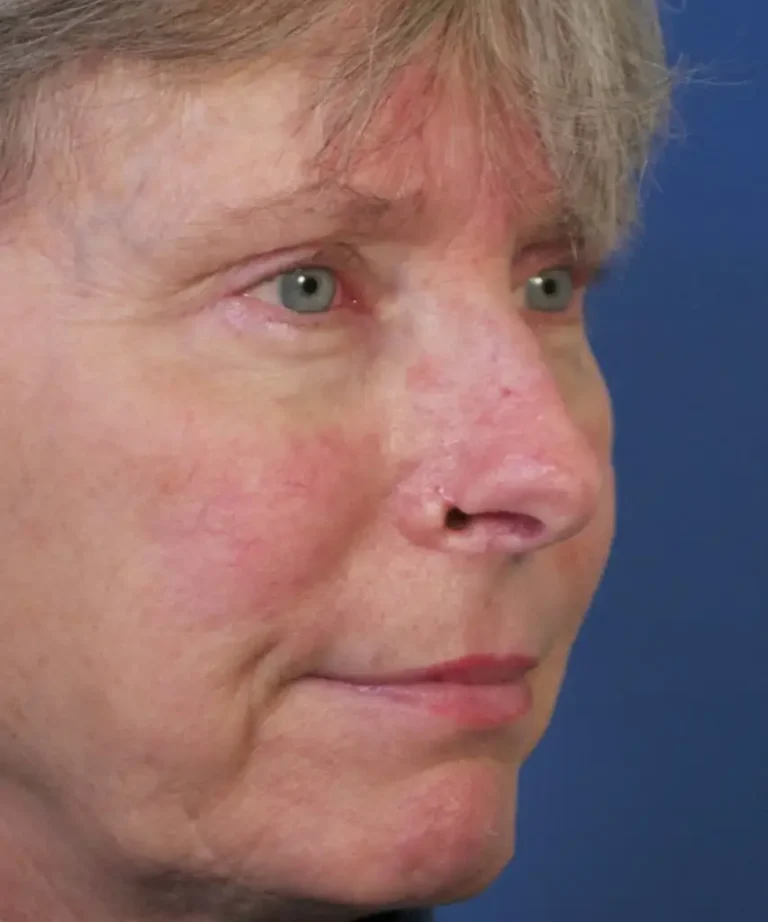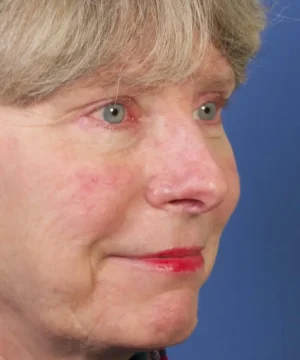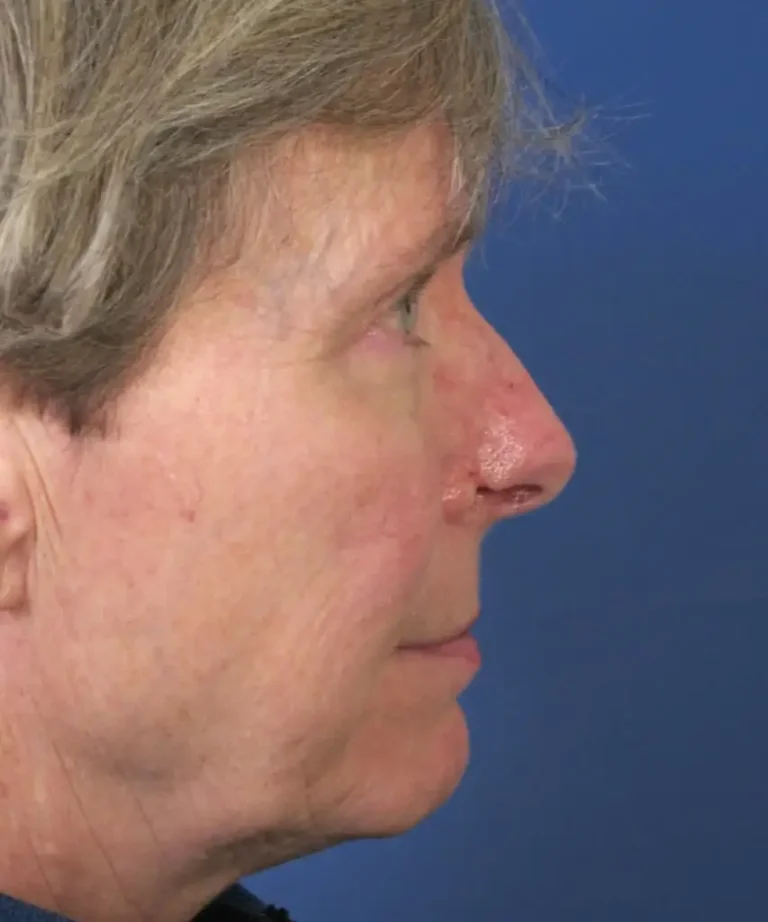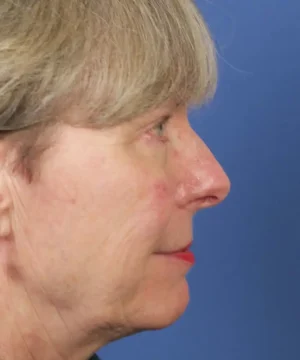
Many patients in this area of the country are, unfortunately, diagnosed with various types of skin cancer involving the nose. The procedure done to remove the skin cancer is often times referred to as ‘MOHS surgery’ and is most commonly performed by specialized dermatologists. In many cases, the nose can be reconstructed shortly after the MOHS procedure to help restore a natural appearance. In some patients, however, this is not the case and they end up having to undergo secondary surgery. This is a great case example of the latter, which highlights how I go about reconstructing defects of this type.
This very pleasant lady from San Diego consulted with me regarding an abnormal contour and appearance that resulted from removal of a skin cancer performed by a local dermatologist. As you look at her from the front, you really don’t see an obvious problem with her nose. If you look closely, though, you can see a hint of the issue involving her right nostril rim.
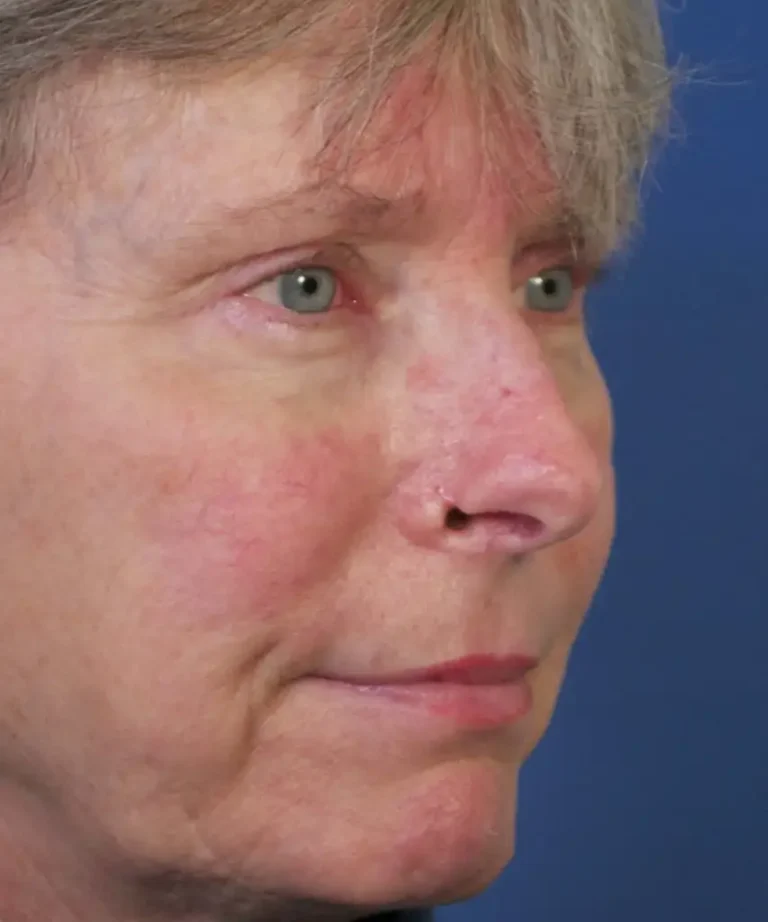
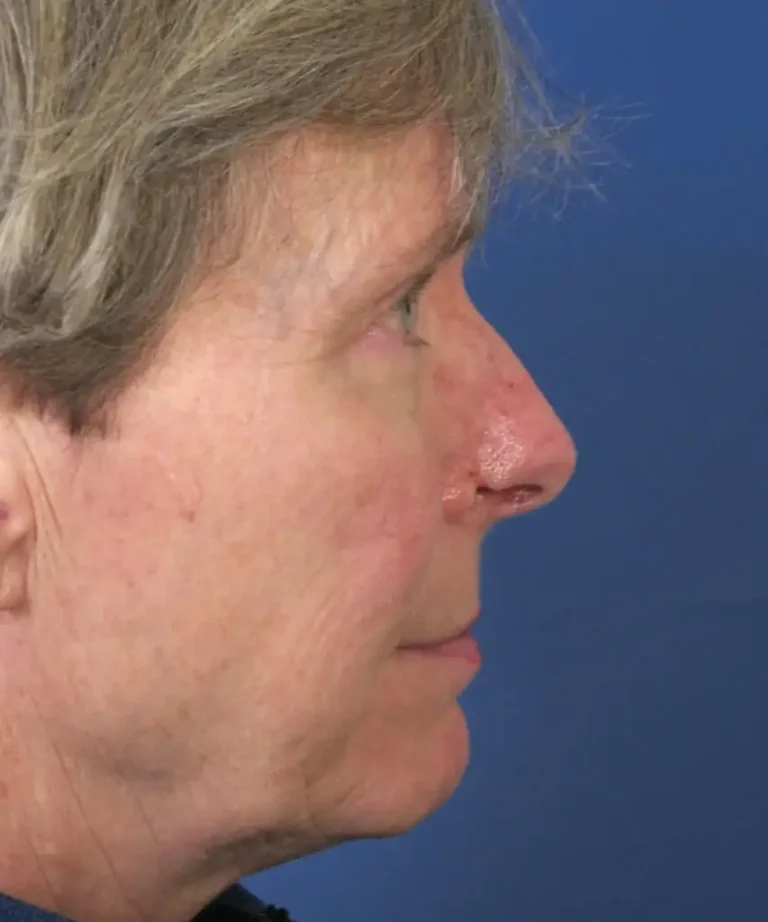
When she begins to turn her head, the defect becomes much more obvious as shown here in the adjacent photo. What you appreciate is a ‘notched’ deformity along the nostril rim. It almost appears as if something was cut out of this area and nothing was done to try and reconstruct it. In fact, that is precisely what happened – the skin cancer was removed but no real effort was made to help restore a natural contour and shape.
Consequently, the patient presented to my office with the hope of possibly having reconstructive nose surgery to repair the skin cancer defect. I discussed with her the complexities and challenges of this type of nasal reconstruction. After all, this type of reconstructive rhinoplasty involves creating a new nostril rim where there is a complete absence of any tissue.
Reconstructive Rhinoplasty After MOHS
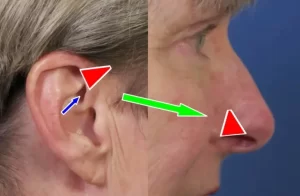
So how did I go about repair this specific deformity? After consulting with the patient, we decided the best approach would involve using what is called a composite ear graft to help restore a more natural nostril rim contour. A ‘composite’ refers to anything that is comprised of several different parts or elements. So a composite ear graft refers to a graft that is comprised of different layers of tissue. In this case, it refers to a graft that includes skin, cartilage and some soft tissue in between these layers.
In most cases when we use the term ‘composite ear graft’ we are referring to a graft that is taken from the concha cymba area of the ear. This is shown in the adjacent photo diagram as the small blue arrow. In this particular case example, though, the composite ear graft was being taken from a different area of the ear – near the root of ear where it attaches to the face. This is shown in the diagram as the red triangular shaped area. The reason for taking this alternative type of composite ear graft is because the shape of the graft was more suitable for the type of defect that I was dealing with along the nostril rim.
At the beginning of the operation, I had to first excise (cut out) a triangle-shaped area around the notched defect. This was done in order to ‘freshen’ the skin edges to allow the new composite graft to be placed properly. You might be thinking this makes the defect even larger. Yes, it did enlarge the defect to some degree – but in cases like this it is well worth it. The composite graft was modeled in size and shape based on the dimensions of the newly created defect along the nostril rim (also represented by the red triangular shaded area). This was then placed very carefully and sutured in position. A majority of the composite graft was used to restore the lost tissue on the outside of the nostril rim. But an equally important area to consider was the actual nostril rim where it transitioned to the inside of the nose. Fortunately, this type of composite ear graft accounted for this area and provided the necessary tissue to help reconstruct the nostril on the inside as well.
Before and After Reconstructive Rhinoplasty
Shown here are the actual surgical results following several months of healing. What you can readily appreciate in the before and after photos is that she now has restoration of a natural looking nose with a more appropriate nostril rim shape and contour. If you look closely at her oblique and lateral views in particular, you will really appreciate the type of improvement that has been made.
This was an incredibly gratifying procedure to perform since this patient truly appreciated the results. Needless to say, she was quite happy with the outcome of her surgery.

